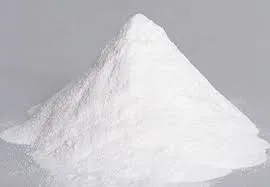
Օգս . 31, 2024 09:19 Back to list
Methylhydroxyethyl Cellulose - Uses, Properties, and Applications
Understanding Methyl Hydroxyethyl Cellulose Properties, Uses, and Applications
Methyl hydroxyethyl cellulose (MHEC) is a versatile cellulose ether that has gained significant attention in various industrial and pharmaceutical sectors due to its unique properties and multifunctional capabilities. As a derivative of cellulose, MHEC combines the hydrophilic characteristics of hydroxyethyl groups with the hydrophobic nature of methyl groups, resulting in a compound that exhibits superior performance across a range of applications.
Understanding Methyl Hydroxyethyl Cellulose Properties, Uses, and Applications
In addition to its use in construction, MHEC plays an essential role in the food industry. It acts as a food additive and thickener, stabilizing emulsions and enhancing the texture of various products. Common food applications include sauces, salad dressings, and dairy products, where MHEC contributes to a desirable viscosity and mouthfeel. Furthermore, because it is non-toxic and considered safe for consumption, MHEC has gained approval from regulatory bodies such as the Food and Drug Administration (FDA).
methylhydroxyethyl cellulose

The pharmaceutical industry also harnesses the properties of MHEC for drug formulation and delivery systems. As a binder and film-forming agent, MHEC is employed in tablet formulations, helping to ensure a uniform distribution of active ingredients and enhancing the stability of the final product. Its controlled release characteristics can also lead to improved bioavailability of drugs, ensuring that medications achieve their intended effects over a prolonged period.
Moreover, MHEC is appreciated for its compatibility with a range of other materials. This quality enables it to be blended with various polymers and additives, making it a popular choice in personal care and cosmetic formulations. From shampoos to lotions, MHEC contributes to product stability, enhances moisturizing properties, and improves texture, ensuring a pleasant user experience.
In recent years, the sustainable attributes of MHEC have been highlighted, as it is derived from renewable cellulose sources. As industries increasingly lean toward environmentally friendly materials, MHEC stands out as a biodegradable option that reduces reliance on synthetic polymers.
In conclusion, methyl hydroxyethyl cellulose is a multifunctional compound with diverse applications spanning multiple industries. Its unique properties, including thickening, binding, and stabilizing abilities, make it invaluable in construction, food, pharmaceuticals, and personal care products. As the demand for sustainable and effective materials continues to rise, MHEC is poised to play a key role in the development of innovative solutions for various sectors.
-
Versatile Hpmc Uses in Different Industries
NewsJun.19,2025
-
Redispersible Powder's Role in Enhancing Durability of Construction Products
NewsJun.19,2025
-
Hydroxyethyl Cellulose Applications Driving Green Industrial Processes
NewsJun.19,2025
-
Exploring Different Redispersible Polymer Powder
NewsJun.19,2025
-
Choosing the Right Mortar Bonding Agent
NewsJun.19,2025
-
Applications and Significance of China Hpmc in Modern Industries
NewsJun.19,2025







